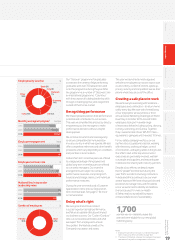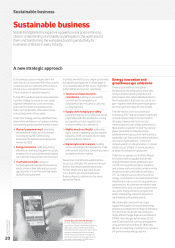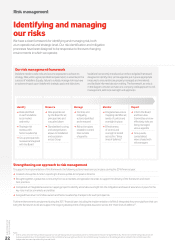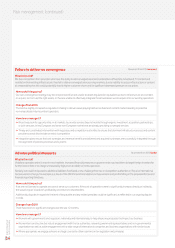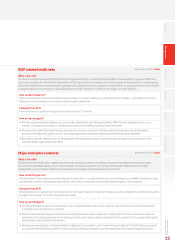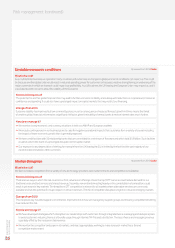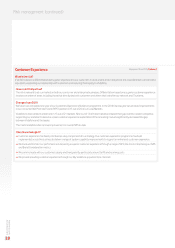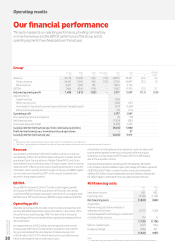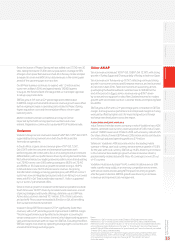Vodafone 2016 Annual Report Download - page 28
Download and view the complete annual report
Please find page 28 of the 2016 Vodafone annual report below. You can navigate through the pages in the report by either clicking on the pages listed below, or by using the keyword search tool below to find specific information within the annual report.
Unstable economic conditions Movement from 2015: Stable
What is the risk?
As a multinational business, we operate in many countries and currencies, so changes to global economic conditions can impact us. This could
be because another global crisis would result in reduced spending power for customers or because a relative strengthening or weakening of the
major currencies in which we transact could impact our protability. As a UK business, the UK leaving the European Union may impact us, and it
could lead to wider concerns about the stability of the Eurozone.
How could it impact us?
The potential for another global nancial crisis may lead to further economic instability and subsequent reductions in corporate and consumer
condence and spending. It could also have a prolonged impact on capital markets that may restrict our nancing.
Changes from 2015
Eurozone stability has improved but low commodity prices, in part a consequence of reduced forecast growth in China, means the threat
ofanother global nancial crisis remains a signicant risk factor, given the inability of central banks to reduce interest rates much further.
How do we manage it?
a We monitor closely economic and currency situations in both our AMAP and European markets
a We include contingencies in our business plans to cater for negative operational impacts that could arise from a variety of causes including
the impact of lower economic growth than is generally expected
a We have credit facilities with 30 relationship banks that are committed for a minimum of ve years and which total £5.8 billion. Such facilities
could be used in the event of a prolonged disruption to the capital market
a Our exposure to any depreciation of sterling, for example from the UK leaving the EU, is limited by the fact that the vast majority of our
income is denominated in other currencies
Market disruption Movement from 2015: Stable
What is the risk?
We face increased competition from a variety of new technology providers, new market entrants and competitor consolidation.
How could it impact us?
There are two ways in which this risk could occur. First, advances in offerings of over the top (‘OTT’) services could reduce demand for our
traditional voice and text services and impact revenue. Secondly, new entrants investing heavily or the consolidation of competitors could
result in price wars in key markets. The threat from OTT competition is relevant for all markets where alternative services are commonly
available and has the potential for major impact on service revenues. The risk of competitor disruption is higher in new and emerging markets.
Changes from 2015
This risk previously included supplier concentration. Improvements in how we manage key supplier groups and ensuring competitive tendering
have reduced this risk.
How do we manage it?
a We have developed strategies which strengthen our relationships with customers through integrated voice, messaging and data price plans
to avoid customers reducing their out of bundle usage through internet/Wi-Fi based substitution. The loss of voice and messaging revenue
is partially offset by the increase in data revenue
a We monitor the competitor landscape in all markets, and react appropriately, working to make sure each market has a fair and
competitive environment
Vodafone Group Plc
Annual Report 2016
26
Risk management (continued)





